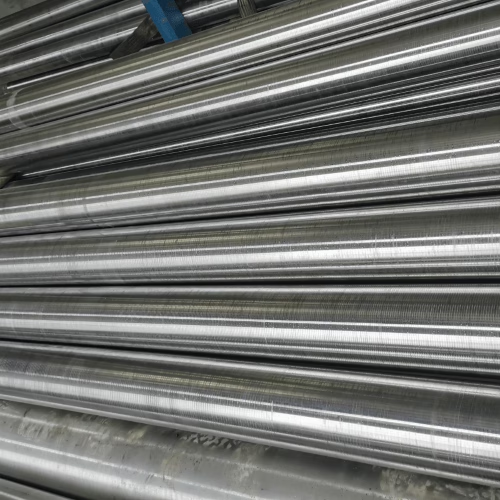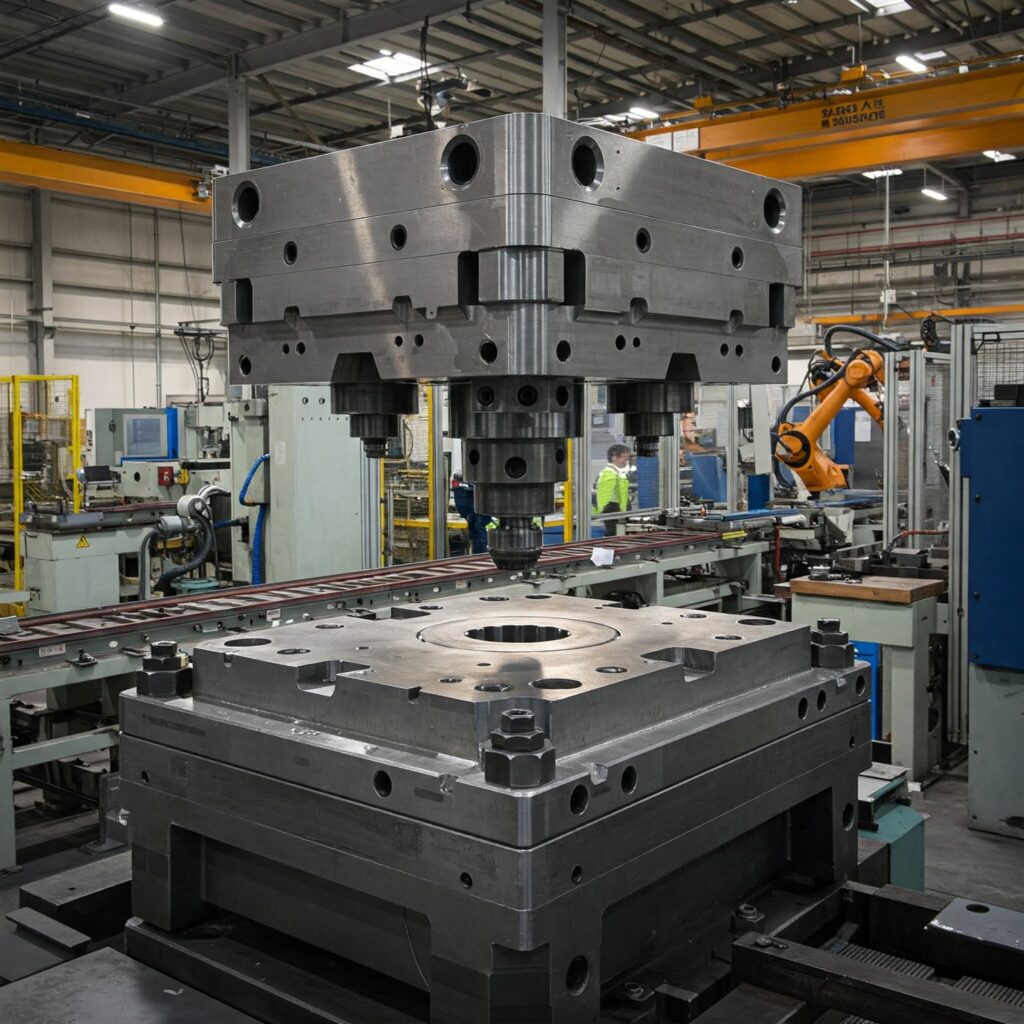Tahmini okuma süresi: 5 dakika
Önemli Çıkarımlar
- SAE/AISI 52100 is a high-carbon, low-alloy chromium steel known for its exceptional hardness and wear resistance, making it ideal for precision mechanical components.
- 52100 steel undergoes a heat treatment process consisting of austenitizing, quenching, and tempering to achieve its desirable properties.
- The standard Rockwell hardness for 52100 steel ranges from 55 to 60 HRC, potentially reaching 62 to 64 HRC based on specific applications.
- This steel has a Young’s modulus of 210 GPa and demonstrates low toughness, making it nonweldable due to its high carbon content.
- SAE 52100 is recognized internationally and has several equivalent designations, such as 100Cr6 in Germany and SUJ2 in Japan.
İçindekiler

SAE/AISI 52100 çelik is an alloy steel occupying a central position in the field of materials science and engineering, particularly in the manufacture of precision mechanical components. It is considered the classic rolling bearing steel, and the comprehensive properties of 52100 steel serve as the benchmark against which the composition of other similar steels is measured and evaluated.
As a high-carbon, low-alloy chromium steel, the core advantage of 52100 steel lies in its exceptionally high hardness and superior wear resistance. These properties make it an indispensable choice for applications requiring long-term, high-intensity operation.
Defining 52100: Chemical Composition
As a low-alloy steel, the 52100 alloy falls under the 5100 series, which are specified low-alloy steels containing more than 0.30% C and are adaptable to austempering processes. It is specifically used in wear applications without requiring carburizing.
Hardness and Heat Treatment
The exceptional fatigue resistance and wear resistance of 52100 steel stem from its heat treatment process. The ultimate goal of heat treatment is to optimize its internal microstructure, transforming it into a hard martensitic structure that meets the stringent demands of rolling contact fatigue under high loads.
Microstructure and Treatment Parameters
The standard heat treatment process primarily consists of three key steps:
- Austenitizing: This is the first step. 52100 steel must be heated to a very narrow and precise temperature range of 855 ± 5 °C. This temperature range ensures complete austenitization of the steel and controls the amount of retained austenite after quenching to a reasonable level. Special attention must be paid to strictly avoiding temperatures exceeding 860°C (1600°F). Overheating produces excessive retained austenite, which readily forms coarse, needle-like martensite with microcracks during subsequent quenching. This is highly detrimental to the component’s final strength and service life.
- Quenching: Immediately after austenitization, perform oil quenching to obtain a high-hardness martensitic structure.
- Tempering: Steel hardened by quenching becomes hard and brittle, necessitating immediate tempering to prevent cracking. 52100 steel is typically low-temperature tempered within the 180–250°C range to relieve internal stresses, enhance toughness, and maintain high hardness.
After undergoing this complete set of processes, 52100 steel achieves its ideal properties. Its microstructure primarily consists of a mildly tempered martensitic matrix, uniformly distributed residual carbides, and a small amount of less than 5% retained austenite. The undissolved residual carbides contribute to enhanced wear resistance.
Target Hardness Levels
52100 steel can achieve high hardness through heat treatment, which is key to its suitability as a high-performance bearing steel. Its hardness value is not fixed but varies within a certain range depending on the specific application and heat treatment process.
After standard heat treatment, the Rockwell hardness (HRC) of 52100 steel typically ranges from 55 to 60 HRC, or 62 to 64 HRC under specific processes.
Hardness targets are also fine-tuned according to the end application. For instance, in conventional bearing applications, surface hardness is typically controlled around 62 HRC. However, when manufacturing precision molds—such as those for consumable electrode vacuum melting—hardness targets are more precisely controlled between 59 and 61 HRC to balance hardness with mold longevity.
At the micro level, its hardness also exhibits variations. Research indicates that after machining, the material’s near-surface hardness (approximately 900 HV0.025) is significantly higher than its overall internal hardness (approximately 750 HV0.025), demonstrating surface strengthening that occurs during the machining process1.
Key Mechanical Properties
Elastic Modulus and Strength
- Stiffness: The Young’s modulus, or elastic modulus, of 52100 steel is 210 GPa.
- Strength: The strength of 52100 steel must be distinguished based on its heat treatment condition. In the annealed state, its strength is intentionally reduced to facilitate machining. At this stage, its tensile strength is approximately 379 MPa, and its yield strength is about 165 MPa. When quenched, its ultimate strength at the fracture point can be measured at 590 MPa.
Toughness and Fracture Resistance
High hardness is typically accompanied by low toughness. Even after standard tempering at 200°C, the overall toughness of quenched and tempered 52100 steel remains low. Its fracture toughness (K_Ic) typically ranges only between 15–25 MPa m1/2, indicating relatively low resistance to crack propagation2.
Kaynaklanabilirlik
AISI 52100 steel is highly prone to cracking during quenching due to its high carbon content, and is therefore nonweldable.
Equivalent Grades and Designations
As an internationally recognized material, SAE 52100 has multiple equivalent designations across different national and industry standards.
| Standard (Country/Region) | Eşdeğer Not | W-Nr. (German Werkstoff) |
| DIN / EN (Germany / Europe) | 100Cr6 | 1.3505 |
| JIS (Japonya) | SUJ2 | – |
| İngiltere (China) | Gcr15 | – |
| BS (United Kingdom) | EN31 (also 534A99 / 535A99) | – |
| İZO (International) | 100Cr6 | 1.3505 |
| UNS (AMERİKA) | G52986 | – |
| GOST (Russia) | ShKh15 | – |


